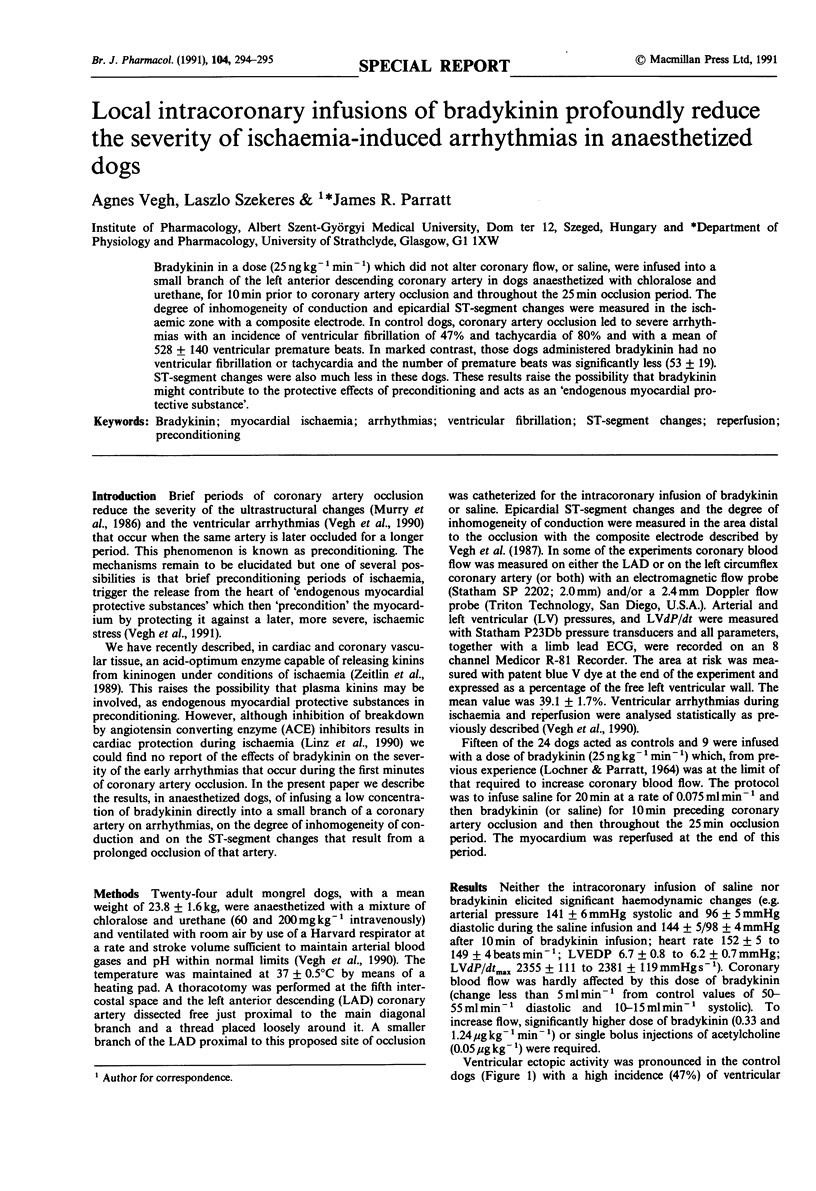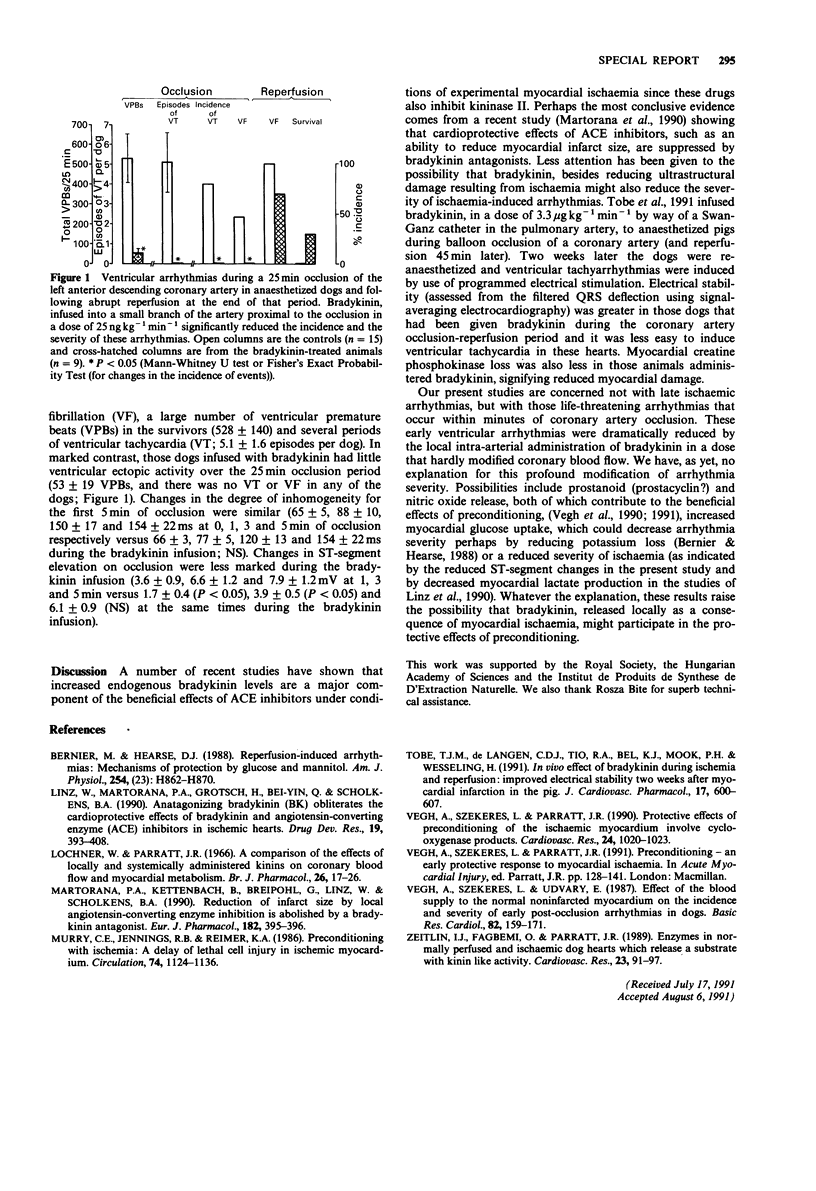Abstract
Bradykinin in a dose (25 ng kg-1 min-1) which did not alter coronary flow, or saline, were infused into a small branch of the left anterior descending coronary artery in dogs anaesthetized with chloralose and urethane, for 10 min prior to coronary artery occlusion and throughout the 25 min occlusion period. The degree of inhomogeneity of conduction and epicardial ST-segment changes were measured in the ischaemic zone with a composite electrode. In control dogs, coronary artery occlusion led to severe arrhythmias with an incidence of ventricular fibrillation of 47% and tachycardia of 80% and with a mean of 528 +/- 140 ventricular premature beats. In marked contrast, those dogs administered bradykinin had no ventricular fibrillation or tachycardia and the number of premature beats was significantly less (53 +/- 19). ST-segment changes were also much less in these dogs. These results raise the possibility that bradykinin might contribute to the protective effects of preconditioning and acts as an 'endogenous myocardial protective substance'.
Full text
PDF

Selected References
These references are in PubMed. This may not be the complete list of references from this article.
- Bernier M., Hearse D. J. Reperfusion-induced arrhythmias: mechanisms of protection by glucose and mannitol. Am J Physiol. 1988 May;254(5 Pt 2):H862–H870. doi: 10.1152/ajpheart.1988.254.5.H862. [DOI] [PubMed] [Google Scholar]
- Lochner W., Parratt J. R. A comparison of the effects of locally and systemically administered kinins on coronary blood flow and myocardial metabolism. Br J Pharmacol Chemother. 1966 Jan;26(1):17–26. doi: 10.1111/j.1476-5381.1966.tb01806.x. [DOI] [PMC free article] [PubMed] [Google Scholar]
- Martorana P. A., Kettenbach B., Breipohl G., Linz W., Schölkens B. A. Reduction of infarct size by local angiotensin-converting enzyme inhibition is abolished by a bradykinin antagonist. Eur J Pharmacol. 1990 Jul 3;182(2):395–396. doi: 10.1016/0014-2999(90)90301-l. [DOI] [PubMed] [Google Scholar]
- Murry C. E., Jennings R. B., Reimer K. A. Preconditioning with ischemia: a delay of lethal cell injury in ischemic myocardium. Circulation. 1986 Nov;74(5):1124–1136. doi: 10.1161/01.cir.74.5.1124. [DOI] [PubMed] [Google Scholar]
- Tobé T. J., de Langen C. D., Tio R. A., Bel K. J., Mook P. H., Wesseling H. In vivo effect of bradykinin during ischemia and reperfusion: improved electrical stability two weeks after myocardial infarction in the pig. J Cardiovasc Pharmacol. 1991 Apr;17(4):600–607. doi: 10.1097/00005344-199104000-00012. [DOI] [PubMed] [Google Scholar]
- Vegh A., Szekeres L., Parratt J. R. Protective effects of preconditioning of the ischaemic myocardium involve cyclo-oxygenase products. Cardiovasc Res. 1990 Dec;24(12):1020–1023. doi: 10.1093/cvr/24.12.1020. [DOI] [PubMed] [Google Scholar]
- Végh A., Szekeres L., Udvary E. Effect of the blood supply to the normal noninfarcted myocardium on the incidence and severity of early post-occlusion arrhythmias in dogs. Basic Res Cardiol. 1987 Mar-Apr;82(2):159–171. doi: 10.1007/BF01907063. [DOI] [PubMed] [Google Scholar]
- Zeitlin I. J., Fagbemi S. O., Parratt J. R. Enzymes in normally perfused and ischaemic dog hearts which release a substance with kinin like activity. Cardiovasc Res. 1989 Feb;23(2):91–97. doi: 10.1093/cvr/23.2.91. [DOI] [PubMed] [Google Scholar]


